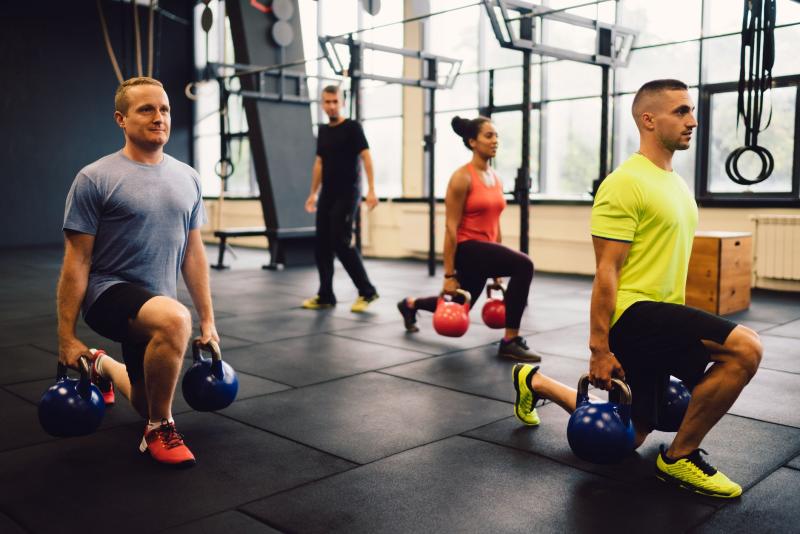Both group fitness classes and solo workouts have different advantages. An instructor with a group of individuals conducts group fitness classes. This social setting can promote motivation, responsibility, and community. The instructor provides expert instruction, ensuring correct form and technique, and the predetermined routine can introduce variety and a balanced workout. Individuals desiring a structured, engaging, and interactive fitness experience may find it an excellent option.
Alternatively, solo workouts offer flexibility and independence. You determine when, where, and how you work out. It permits customization, as you can adapt the routine to your specific requirements and objectives. It is excellent for individuals who prefer introspection, solitude, or specific exercise regimens. However, it requires self-discipline and exercise technique knowledge. In a nutshell, individual preferences regarding structure, social interaction, flexibility, and autonomy frequently influence the decision between group fitness classes and solo exercises.
What are Group Fitness Classes?
Group fitness classes are organized workout sessions with more than one person led by a trained instructor. They can happen in many places like exercise studios, gyms, community centers, or online. These classes have many different ways to work out, so they are suitable for people with varying levels of exercise and tastes. They can be anything from high-intensity interval training (HIIT), spin, and boot camps, which focus on cardio and strength, to yoga, Pilates, and Zumba, which focus on dance moves. One of the best things about group exercise classes is that everyone works out together. Participants can get inspired by each other, which helps them feel accountable and like they belong. Strenuous workouts can be more fun and inspiring when done with a group.
In group fitness classes, the job of the instructor is essential. They lead the class by showing how to do the exercises, making sure everyone uses the correct form, adjusting for different skill levels, and keeping the atmosphere upbeat and positive. Group exercise classes are usually structured and well-balanced, with a warm-up, the main workout, and a cool-down. They have a set pattern, which is helpful for people who are just starting or who like a structured way to work out. In general, group fitness classes are a way to work out with others in a structured, led way.
What are Solo Workouts?
Solo workouts are a person’s own exercise routines without going to a group fitness class or having an instructor watch over them. Most of these self-guided workouts can be done at a gym, at home, outdoors, or just about anywhere else you can move around. There is a lot of freedom and personalization with these workouts. You can choose the type of exercise you do, how hard it is, how long it lasts, and when and where you work out based on your tastes and fitness goals. You can make your workout plan that includes everything from weight lifting and cardio to yoga and Pilates.
Solo workouts require self-discipline and being responsible for yourself. They also need a basic knowledge of fitness principles and the right way to exercise for safety and effectiveness. Many people like being alone because they find it healing and powerful. When you work out yourself, you can pay attention to how your body feels and change your practice as needed. They can also be combined with other ways to care for your health, like meditation and awareness. In the end, solo workouts are a very individualized way to get fit. They are great for people who like to be independent, flexible, and self-reliant on their fitness journey.
Difference Between Group Fitness Classes and Solo Workouts
An instructor conducts group fitness classes and features numerous participants, creating a social context conducive to personal growth and development. They provide a plan and a program of structured, well-rounded workouts, but neither is flexible. While group classes may force you to conform to a predetermined schedule, solo workouts allow you to tailor your routine to your specific goals and needs. They allow for mobility in time and space but demand self-control and familiarity with fundamental exercise principles. The choice between group fitness classes and solo workouts depends primarily on individual preferences regarding structure, social interaction, and adaptability. We’ve compared solo workouts to group fitness sessions and highlighted the key differences below.
Structure
Instructors provide a framework for group fitness classes. Solo workouts are self-guided, allowing you to make your schedule.
Instruction
In group fitness lessons, an instructor ensures everyone is doing the exercises correctly and encourages them. You are in charge of your form, pace, and drive in solo workouts.
Social Interaction
Group fitness classes are social, so they help build a sense of community and hold people accountable. Solo workouts are done by yourself, which gives you time to think and reflect.
Schedule
Group classes have set times, unlike solo workouts, which can be done whenever is most convenient.
Variety
To avoid monotony during solo workouts, you must actively introduce variety. Group classes typically offer a variety of workouts.
Intensity
A class’s collective vitality and speed might be an extra incentive to give your all. When working out alone, you can push yourself to your limits.
Personalization
You can tailor your routine more precisely to your needs and preferences when working out independently. The structure of group classes often does not allow for individualized attention.
Cost
Individual workouts, especially at home, are sometimes free or much less expensive than group fitness classes.






